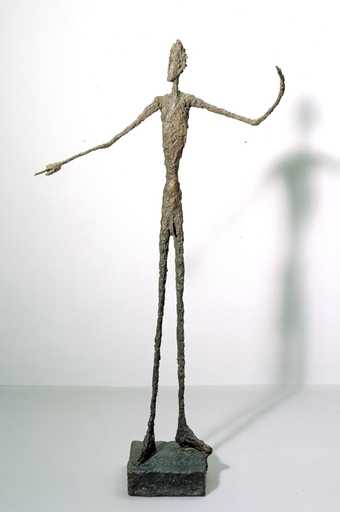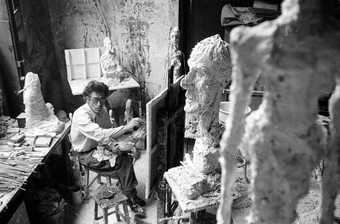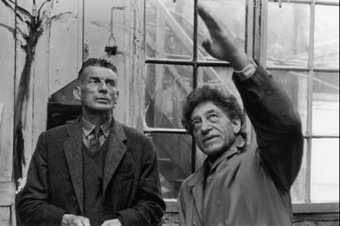It is always smaller and more fragile than I remember. Its title is redolent of deep night, stained sheets and dragged bodies, while the cage-like structure is reminiscent of the scaffold and the guillotine, or a charred building. Above, attached by twisted bent wire to the roof beams like an early television aerial, are three white shapes: an upside down “L” or blind man’s cane, a crescent or shooting comet and a broken moon. These shapes could just as well be impaled body parts: a gaping head and a long skinny penis or tongue. This is a place of medieval torture or an ancient object from an Egyptian tomb. It is a grisly, cruel scene – none of the gaiety, humour and bird-like sounds that emanate from a Klee or Miró. 'I work to please the dead' Giacometti said.
Dropped down into the body of the cage and held by a trembling wire is a small plaster heart. It is a pendulum in a Swiss clock, a beating heart from a Poe story, or a heart for a tin man. It makes me think of weight and gravity, the terrible lonely ache of love, passing moments and the 'unbearable lightness of being'. I have a photograph I must have taken a very long time ago in Tate of the little plaster heart hanging by its wire. Now and then it surfaces to the top of a big pile of images I have in my studio. I always stop and look and think how something so simple can work so well, and it’s always going to be there.
Giacometti is on at Tate Modern 10 May – 10 September 2017
Hour of the Traces was purchased with assistance from the Friends of the Tate Gallery in 1975
Featured in Tate Etc. issue 4: Summer 2005



